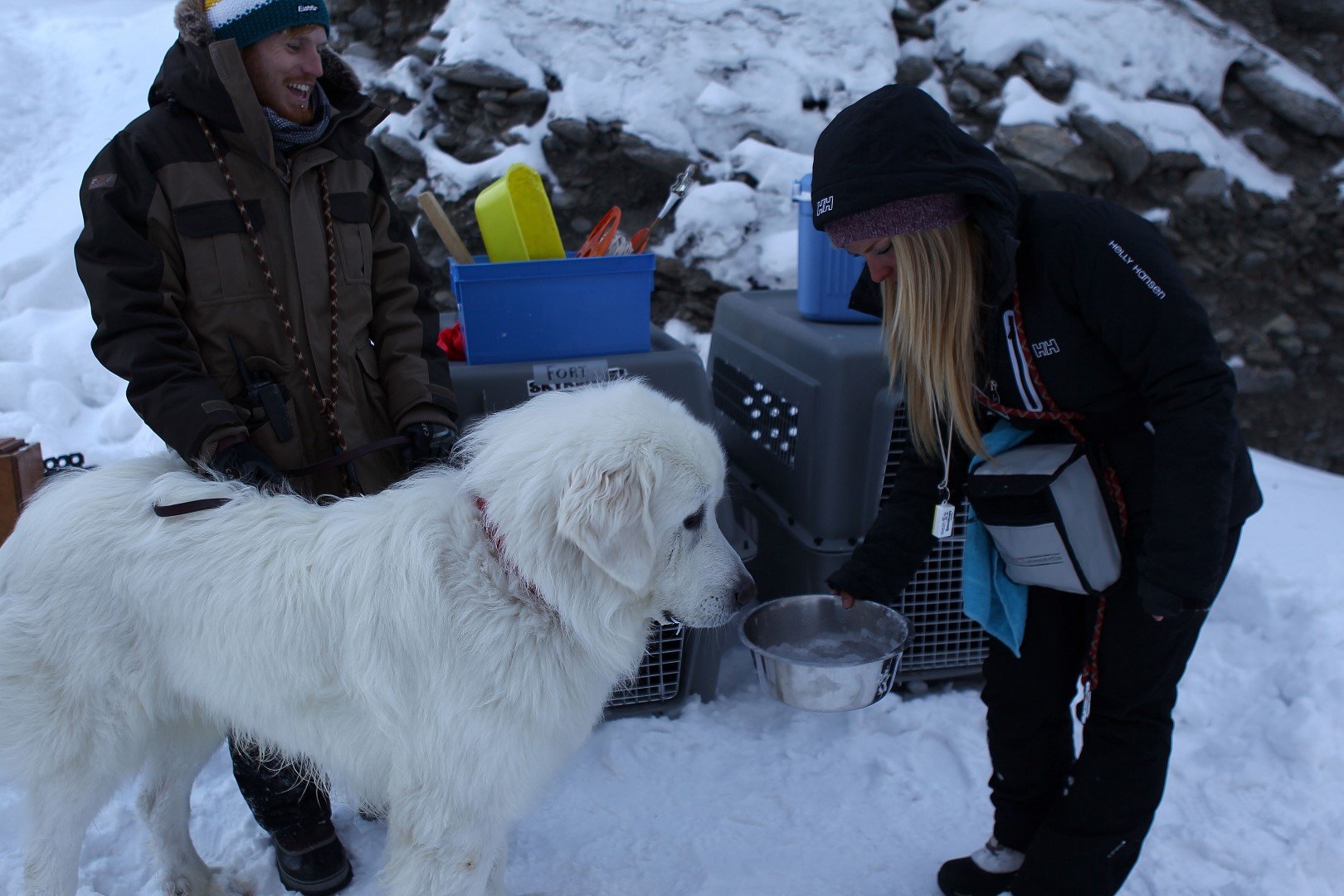Tales of Wolf Training
When I was first given the opportunity to work overseas with one of the world’s best animal trainers, I was in complete and utter shock! But seriously, who gets to train wolves for a movie in China? Little did I know, this gift would be the biggest challenge of my life both professionally and personally.
Moving to a foreign country alone to meet a perfect stranger and devote months of your life away from everything comfortable and secure was scary enough! But meeting and learning to work with a pack of wolves was a whole other story.
It all started in Beijing, where our team of ten Canadian/American trainers and assistants were based with ten adult wolves and four 4 month old wolf puppies. My job was simply to expose them to new people and experiences, clean their enclosure and love the heck out of them (that part was easy). The 40 degree Beijing heat was my biggest challenge at the time. And then the real fun began: training!
I thought with my dog training experience and knowledge I brought something to the table in this department, because I certainly didn’t bring any handy, power tool skills with me! The only thing that I can confidently say that I was good at was… oh wait – nothing! The wolves are so quick, and smart, and pick up on everything; every insecurity, hesitance, fear, concern, anticipation- everything! So training them was beyond a learning experience, it was a life experience.
The wolves taught me what self-awareness is all about. They taught me to always be one step ahead in my training but also in my thoughts and actions. The list goes on and on, and my experience working with them, as well as simply interacting with them, will forever impact who I am and the life that I lead.
As time went on the challenges with training and the goals we set for ourselves became more and more difficult. Situations were never as they seemed they would be, so the wolves as well as the trainers constantly had to remain adaptable. They displayed such resilience and strength as a pack, and what we asked of them simply became more and more challenging.
As days, weeks and months passed it became ever so clear to me that it was the relationship itself between trainer and wolf that solidified our successes, not the food. On difficult shoot days when the elements of nature were against us (75km Mongolian winds, blizzards during night shooting, 40 degree heat waves) the wolves pushed through their frustration or discomfort all in the name of the relationship they shared with their trainer. It was the most beautiful, moving training I have ever witnessed. It also solidified the training belief that if you think an animal won’t do something, then they won’t. If you have faith in them, they share that faith in you – and that is when you have success in training, with any animal.
We didn’t just have wolves with us on this film in China. We had 6 Mongolian dogs that had previously been tied to buildings or trees, or simply wandered the streets up until we found them for the use of the film. One of the Hollywood trainers (Sally Jo Sousa) that I had the privilege of observing and assisting has mastered animal training. Her expertise, creativity and handling skills were like nothing I have ever seen. We worked these 6 adult dogs through reactivity, dog to dog aggression, fear aggression, over arousal, and simply poor “pet life” skills in a matter of just a few months. And yes, the food reinforcement was an enormous contributor to this process. However, again, I was captivated by how much of the behavior changes were based on trust alone, and time put into relationship building.
Micky & Fred argue over a stick. 2 of the puppies Annika worked with.
The dogs didn’t only do things for us on set just because they might get a piece of meat for it after the director announces “cut”; they did it because she asked them to, and so they wanted to, as they had such trust and a strong, positive relationship with her. No fear of punishment or pain. Along with the hours spent building trust with handling, the introduction of equipment such as collars and leashes, proper interactions with other animals, teaching a variety of behaviors to be used in the film, she also made a conscious effort to spoil them rotten with attention and extra exercise when deserved! This was such a beautiful example of a professional trainer recognizing what an animal sees as reinforcement and integrating that into the animal’s life in order to develop mutual respect and appreciation.
The major lesson I learnt that I intend to bring with me as I continue on this adventure as an animal trainer is not to rely solely on food/treats as an animal’s reward or motivation to work with me. It is just as important to show them that I respect their needs/desires and to devote more time in joining them in doing the things they love. I strongly believe that putting the time into developing a connection through trust is the key to a successful relationship with your pet!

















